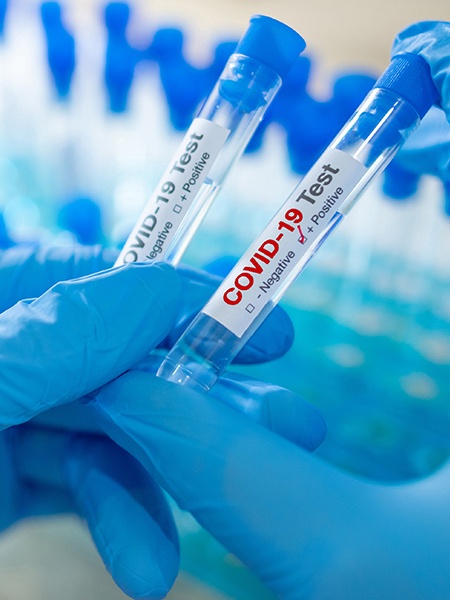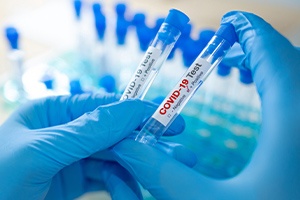What Are The Differences Between COVID 19 and the Flu
 Flu season is approaching, and the COVID 19 pandemic remains a real and relevant public health concern. Because these two types of viruses may share similar symptoms across patients, knowing the differences can help save lives and stop the spread among vulnerable populations. For some, having to battle either of these prevalent illnesses can be life-threatening.
Flu season is approaching, and the COVID 19 pandemic remains a real and relevant public health concern. Because these two types of viruses may share similar symptoms across patients, knowing the differences can help save lives and stop the spread among vulnerable populations. For some, having to battle either of these prevalent illnesses can be life-threatening.
A Quick Primer on COVID 19
According to the CDC’s comparison between COVID 19 vs the flu, the former illness is caused when someone has been infected by a coronavirus officially named SARS-CoV-2. Though some of its symptoms may mimic influenza, not nearly as much information is known about COVID 19 and medical professionals are still acquiring information on the virus’s characteristics as well as investigating new therapeutic treatments and potential vaccine solutions.
While scientists are working to understand and develop treatments for COVID-19, the CDC offers this further guidance to protect yourself and others:
How COVID 19 Spreads
COVID 19 transmits between people easily. People who are closer than 6 feet apart from another and talking with uncovered faces are most likely to spread or catch the virus. This is because the virus is carried through respiratory droplets and can enter another person’s airways.
Some other less-common ways that COVID 19 can spread include being in an enclosed space with poor ventilation and, rarely, through contact with contaminated surfaces.
How to Protect Yourself Against COVID 19
Unlike the flu, which has various treatment options available, COVID 19 is still being monitored, studied, and understood. Because antivirals, therapeutics, and vaccines to combat the coronavirus are still in development and testing stages, people should take proactive measures to protect themselves and others from acquiring, spreading, and transmitting the illness.
To protect yourself from COVID 19 and reduce your chances of infection, here are some tips from the CDC:
- Wash hands frequently or use hand sanitizer containing 60% alcohol or more.
- Avoid close contact with others by maintaining 6 feet of distance between you and others that do not live with you.
- Regardless of having the virus or not, wear a mask in public settings and with others who are members of vulnerable groups.
- Do not place masks on children under age 2, anyone with breathing difficulties, an unconscious person, or someone unable to remove the mask independently.
- Always cover coughs, sneezes, and dispose of tissues in the trash.
- Immediately after, wash your hands with soap and water for 20 seconds or with a proper hand sanitizer containing at least 60% alcohol
- Clean commonly touched surfaces frequently; daily, if possible.
- Monitor your health symptoms and look for fever, cough, shortness of breath, loss of taste, or other symptoms listed below. If symptoms do manifest themselves, take your temperature to see if you are developing a fever.
COVID 19 vs. the Flu: Similarities and Differences
Now that we have covered the basics of COVID 19, we should discuss the similarities that these two illnesses share with each other.
Common Symptoms
Though everyone may experience both viruses differently, these are some common symptoms that both COVID 19 and the flu share:
- Fever
- Chills
- Coughing
- Shortness of breath or general breathing difficulty
- Fatigue (tiredness)
- Sore through
- Runny/stuffy nose
- Muscle pain/body aches
- Headache
- Vomiting and diarrhea (more common in children)
Symptom Development Timeline
Because both viruses present many similar symptoms, it can be tough to determine which one you may be battling.
Beyond the common symptoms shared with the flu, COVID 19 patients may also experience a new loss of taste or smell. Because this coronavirus is still being studied, however, the CDC also advises that you stay informed on the latest information as new symptoms may be discovered over time.
Infection Timeline
Typically, a COVID 19 patient will develop symptoms over a longer period of time than a flu patient. With the flu, it takes approximately 1-4 days to develop symptoms post-infection, whereas COVID has a wide-ranging timeline for developing symptoms that can take anywhere from 2 to 14 days.
Complications
The CDC notes these complications that can result from both COVID 19 and the flu:
- Pneumonia
- Respiratory failure
- Acute respiratory distress syndrome
- Sepsis
- Cardiac injury (heart attack, stroke, etc.)
- Multiple-organ failure
- Worsening of chronic medical conditions
- Inflammation of heart, brain, or muscle tissues
- Secondary bacterial infections
Additionally, COVID 19 patients may also face other complications, such as blood clots. Children infected with the coronavirus may be at risk of developing Multisystem Inflammatory Syndrome (MIS-C).
COVID 19 vs Flu Treatments
Because the influenza virus has been studied for longer than COVID 19, there exists a wider range of known treatments. Typically, flu patients are prescribed specific antiviral drugs that are approved by the FDA.
Unlike the flu, COVID 19 has no FDA-approved therapeutic solutions available. Though some are in testing phases, there is no official treatment for the virus yet.
The same goes for vaccines. Flu shots are regularly available and widely used. Because they typically take a long time to be developed, there are no approved vaccines for COVID 19, though some trials are taking place.
I Have COVID 19 or the Flu – What Should I Do?
If you are developing symptoms that mimic either viral infection, you should go to your nearest medical provider that can administer a COVID 19 test. If you are not receiving a rapid response test, it is important to socially distance yourself from others and wear a mask around people until the results are available.
No matter the condition, if you are a person over the age of 60, you should discuss your treatment options with your provider. If you have a chronic or preexisting condition, you may be at greater risk of developing worse complications from COVID 19. You should discuss with your care provider if you should pursue intensive treatment at a medical facility where you can be more closely monitored for any worsening symptoms.
Should you test positive for COVID 19, the CDC recommends doing the following to prevent the spread:
- Stay home and rest
- Hydrate yourself regularly
- Monitor your symptoms
- Tell close contacts they may have been exposed to the virus
- Remain in regular contact with your doctor
- Call ahead if you need to visit a medical facility
- Call 911 if you are having emergency warning signs like Trouble breathing, persistent chest pain or pressure, new confusion, inability to stay awake, or bluish lips/face. Be sure to tell them you have COVID 19.
For more information, visit this CDC infographic on managing your COVID 19 symptoms at home.
Are You Receiving Home Healthcare and Are Worried About COVID 19?
For those that invite healthcare providers into their homes, we thank you for your willingness to continue doing so during this pandemic. If you would like more information on how we are responding to COVID 19, please refer to our official statement. If you would like to learn more about COVID 19 vs the flu or ask any more questions about this, contact us anytime.

